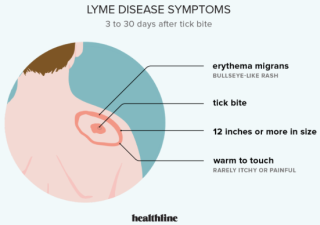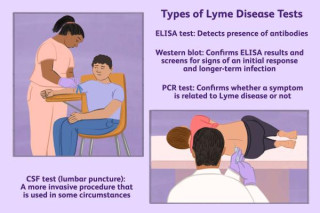Unveiling the Role of the Deer Tick in Lyme Disease Casescreated at May 06, 2009 1,381 1,381 The deer tick, |
Does Lyme disease affect mental functioning?updated at Nov 07, 2025 1,330 1,330 Does Lyme Disease Affect Mental Functioning?Lyme disease, |
How do I know if I have got Lyme disease?created at May 06, 2009 1,186 1,186 Lyme disease symptoms can vary greatly but often begin with a characteristic expanding rash (erythema migrans) at the site of a tick bite.Other early symptoms may include fever, |
Will my doctor treat me for Lyme disease?updated at Sep 06, 2025 1,244 1,244 Doctors typically treat Lyme disease when a patient presents with symptoms consistent with the disease, |
Does other diseases accompany Lyme Disease?updated at Nov 08, 2025 1,670 1,670 Lyme disease can often be accompanied by other diseases or conditions. These are sometimes referred to as co-infections or opportunistic infections.Here's a breakdown:Co-infections: These are other tick-borne diseases that can be transmitted at the same ti... |
A test for Lyme Diseaseupdated at Nov 08, 2025 1,298 1,298 Two-Tiered Serological TestingThe most common approach to testing for Lyme disease involves a two-tiered serological process using blood tests.This method looks for antibodies your body produces in response to Borrelia burgdorferi, |
Is Lyme disease a New Illness?updated at Nov 07, 2025 1,751 1,751 Is Lyme Disease a New Illness?Lyme disease is not a new illness.Although formally identified and named in 1975 following an outbreak in Lyme, |
How prevalent is Lyme disease?updated at Nov 07, 2025 1,477 1,477 Lyme Disease Prevalence: A Public Health ConcernLyme disease stands as the most common vector-borne illness in both the United States and Europe.Its widespread presence and the challenges associated with diagnosis and reporting make it a significant public... |
How does Lyme Disease start?updated at Nov 08, 2025 1,341 1,341 Lyme disease is an infectious disease caused by a spiral-shaped bacterium of the *Borrelia* genus, |
Unraveling Borreliosis: Understanding the Disease Caused by Borrelia Bacteriaupdated at Nov 08, 2025 1,297 1,297 Borrelia BacteriaBorreliosis, |
How does Lyme disease infection occur?updated at Oct 30, 2025 1,284 1,284 Lyme disease infection occurs through the bite of an infected blacklegged tick (also known as a deer tick).These ticks acquire the bacteria, |
What is Lyme Disease?created at May 06, 2009 1,350 1,350 Lyme disease is a bacterial infection transmitted to humans through the bite of infected blacklegged ticks.The bacteria responsible is Borrelia Burgdorferi (and in some areas, |
Lyme disease in Domestic Animalsupdated at Nov 08, 2025 1,280 1,280 Lyme Disease in Domestic AnimalsLyme disease, |
Recognizing Lyme Disease Symptoms in Humans: A Comprehensive Guidecreated at May 06, 2009 1,477 1,477 Lyme disease, |
Decoding Lyme Disease Diagnosis: Unraveling the Mysteryupdated at Nov 08, 2025 1,415 1,415 The Diagnostic Dilemma of Lyme DiseaseDiagnosing Lyme disease is notoriously complex and frustrating, |









